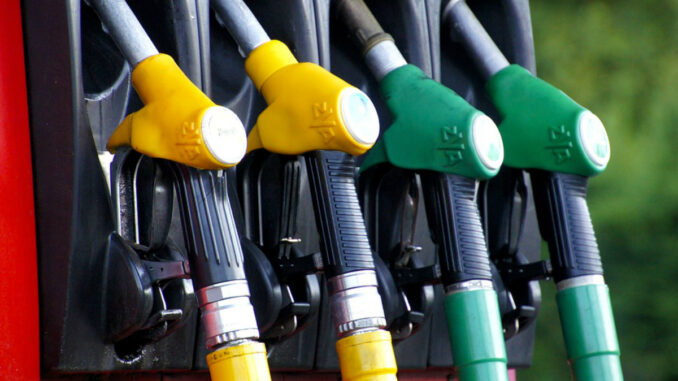
Oil and gasoline are haunting Joe Biden’s presidency.
US gasoline prices hit $5 per gallon for the first time ever last June, amid strong demand and supply fears driven by Russia’s war in Ukraine. Prices drifted down as the United States released oil from its strategic reserve and supply stabilized.
Biden no doubt breathed a sigh of relief, since high gas prices are death to politicians. But gas prices are now creeping up once again, unnerving voters anew just as Biden is touring the country to tout his handling of the economy and make the case for why he deserves a second term.
Gas now costs around $3.85 per gallon, up from around $3.25 at the start of the year. The cost of gas itself matters less than the psychological impact it has on consumers. And when gas prices cross a dollar threshold—$3 and something, $4 and something, and so on—consumer attitudes move, too. Gas prices starting with $5 in the months before the 2024 election would be a nightmare scenario for Biden.
Rising oil prices are the main reason for higher gasoline costs. They’re up from around $73 at the start of the year to about $83 now. That’s not a huge jump, but refining capacity in the United States is tight and there have been a few disruptions. With solid demand and a limit on refining, a small rise in the cost of the input commodity, oil, can have an outsized effect on the cost of the retail product, gasoline.
Analysts don’t think we’re heading back to $5 gasoline. The Energy Information Administration’s latest gas price forecast is $3.56 per gallon in 2023 and $3.45 next year. Biden can live with that.
But energy prices are volatile, as everyone knows, and small changes can generate very unwelcome surprises.
Saudi Arabia and Russia, for instance, have recently cut back oil output, one of the factors sending prices higher. Russia is a particular wild card, because of the war in Ukraine and subsequent sanctions on Russia. So far, Russian President Vladimir Putin hasn’t imposed dramatic production cutbacks that would raise everybody’s energy costs, mainly because he desperately needs the oil revenue to finance his costly war. But it’s still possible Putin could do something dramatic, especially if he wants to hurt Biden’s chances of reelection and open the way for a new president less committed to Ukraine, such as, ahem, Donald Trump.
One irony of Biden’s term is that the greenest US president ever is presiding over record fossil fuel production. The EIA now expects US crude oil production to hit a new record high of 12.8 million barrels per day late this year, and then to rise to 13.1 million barrels next year. US natural gas production hit a new high in 2021 and is even higher now.
[Drop Rick Newman a note, follow him on Twitter, or sign up for his newsletter.]
American producers aren’t drilling more because Biden or any government official wants them to. The US government doesn’t control the domestic energy sector the way the Saudi or Russia governments do. US production is going up because private sector firms can make good money at current prices and they think profits will hold up long enough to justify the cost of more drilling.
Some Americans think the United States became “energy independent” when Donald Trump was president, and has backslid into more dependence on foreign producers under Biden. That’s not true. America first achieved energy independence — producing more energy, overall, than it consumes — in 2012, when Barack Obama was president. The US has been a net energy producer ever since. The United States does import and export some energy products, but that’s the market deciding the most efficient way to get global products to end users.
Trump, of course, talked up fossil fuels, while Obama and Biden, pointing to climate change, have insisted on the need to switch to renewable forms of energy. The green energy law Biden signed last year is, in fact, the most aggressive push to adopt renewable energy in American history. But the transition will take decades and most analysts think the global demand for oil and natural gas will continue to rise for the next 10 years or so, before leveling off and then slowly declining.
The hard reality Biden faces is that no matter how urgent the need to address global warming and shift to renewables, the US and global economies still need massive amounts of fossil fuel to function. Even minor supply shortfalls can send energy prices soaring and enrage consumers. Price spikes cause real economic harm, and gasoline prices may be the least of it. Winter heating costs go through the roof. Businesses sensitive to energy cost invest less. Hostile governments such as Russia maintain and maybe increase their leverage.
It’s very unlikely you’ll hear Biden bragging about record fossil fuel production under his watch. He wants to speed the green energy transition rather than drill, baby, drill. But Biden surely knows he needs fossil fuel — a lot of fossil fuel — to get reelected. Gas prices may determine his future.
Rick Newman is a senior columnist for Yahoo Finance. Follow him on Twitter at @rickjnewman.



